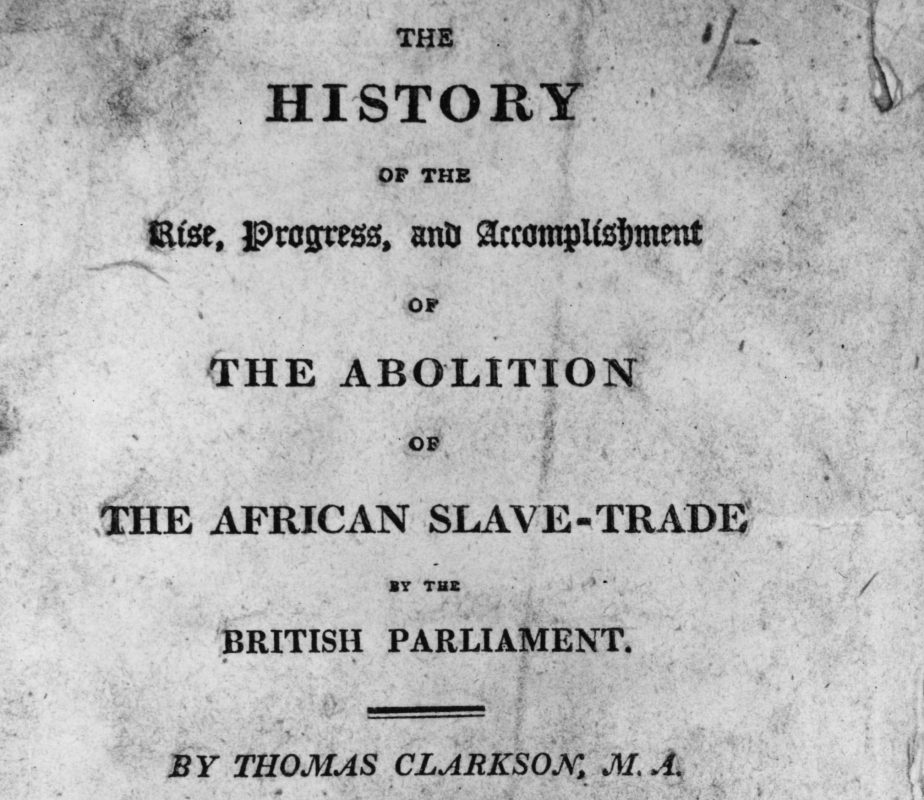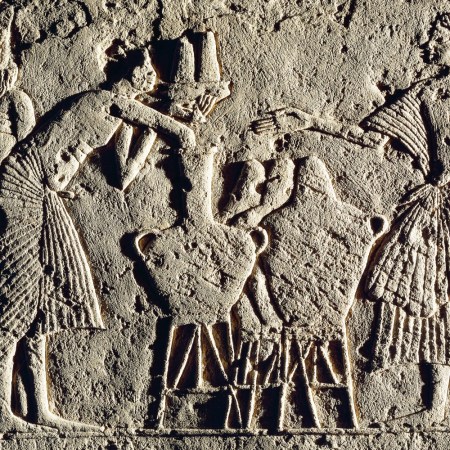America has achieved a lot of firsts: First man on the moon, first to have a person cross the continent of Antarctica alone, first to make a burger with 20,000 calories. But we were not the first nation to outlaw slavery, whatever anyone may claim. Spain, for instance, banned it in 1811. France technically banned it twice before we did: Outlawing slavery in its colonies in 1794, reestablishing it in 1802, and managing a more permanent prohibition when it banned it a second time in 1848. That was still 17 years before we did, via our 13th Amendment (“Neither slavery nor involuntary servitude, except as a punishment for crime whereof the party shall have been duly convicted, shall exist within the United States, or any place subject to their jurisdiction”), which wasn’t ratified until 1865.
The United Kingdom is among the many countries that outlawed slavery before us. This is somewhat surprising because, at one point, we had a lead when it came to the abolition movement. This is how the U.S. and the U.K. both took steps to stop slavery in 1807, only for the former nation to see its efforts fail miserably.
Taking on the Trade
Let’s be clear: It’s hard to find an aspect of slavery that isn’t inherently monstrous. But the slave trade itself is particularly heinous. People are taken from their homelands, never to return, assuming they survive a transatlantic journey that could last up to three months. It’s estimated 20 percent of those being transported from Africa to the Caribbean and U.S. died en route. And shorter treks often proved lethal as well, with dangers including dysentery and smallpox, not to mention (as the BBC put it) “sheer misery; sometimes slaves willed themselves to die out of sheer depression and hopelessness.”
This cruel chattel network was an obvious target for abolitionists. Even advocates of slavery struggled to defend it. Thus on March 2, 1807, the U.S. Congress abolished the slave trade. Just over three weeks later, the kingdom across the pond followed our lead—Britain’s Abolition of the Slave Trade Act became a statute on March 25, 1807.
But Britain followed through on this act by passing the Abolition of Slavery Act in 1833. Whereas 28 years after that, a still-divided-by-slavery America started the Civil War.
What happened? Why did Britain end slavery nearly three decades before we did? And how did they avoid the bloodshed we experienced? (Remember, up to 750,000 soldiers died during our internal conflict.)
How Britain Stopped Slavery, Sort Of
Prior to 1807, Old Blighty took a significant (if somewhat confusing) step toward ending slavery. Britain’s National Archives notes that, in 1772, it was ruled that “no slave could be forcibly removed from Britain and sold into slavery.” This applied only to Britain, not the rest of the Empire. And it didn’t actually ban slavery in its home country. The ruling was intended to prevent slaves from being removed from Britain against their will. At least in theory, owners who let their slaves remain in Britain were in the clear. (Indeed, technically even slave owners who persuaded their slaves to agree to be sold elsewhere were okay.) But it was a significant restriction on how slavery operated. Since slavery includes, by definition, the ability to fully control another person and his or her physical location, this was an important step in weakening and then eliminating the practice.
Make no mistake, slavery had been a significant part of British life up until then—the BBC found that Britain once had 46,000 slave owners. But it was primarily limited to the Caribbean, with an estimated total of 800,000 slaves in 1833. As you’ll see, this is far fewer than the total in the U.S., but still a massive number of people. Why wasn’t there a more drawn-out battle over slavery’s elimination in Britain?
In short: The slave owners got an offer that was too good to refuse. British taxpayers wound up committing 20 million pounds to compensate slave owners for the loss of their “Caribbean property.” This was 40 percent of the national budget. That sum would be equivalent to over $20 billion today.
It’s also worth noting that the Empire was still a long way from true equality. While Britain was extremely generous to slave owners, it was not willing to pay any reparations to the people who had actually been enslaved. Beyond that, the British Empire came to greatly utilize indentured labor: It’s not quite slavery—in theory, at least, there’s a contract that can be fulfilled—but far too close for comfort. And just to make the offer a little bit sweeter for the slave owners, their “former” slaves were required to keep working 45 hours a week for years after they were freed—six if they were in the field, a mere four if they were domestics.
Imperfect as the British emancipation was, the United States can still look upon it with envy.
Why American Slavery Survived
Banning the slave trade had an immediate and undeniable benefit—it killed the incentive to steal people from their homes overseas and send them on a brutal, lengthy journey to the U.S., a trip that often proved fatal. Some observers felt the ban might offer additional rewards. After all, wouldn’t it also stop the growth of slavery? Or maybe even cause slavery to shrink?
At the time of the trade ban, the U.S. already had four million slaves in the South alone. By 1860, the United States had 3.9 million slaves. The number had declined, but only slightly. Why? Because children of these slaves became slaves as well. And slave owners had the right to sell their slaves within the United States, meaning the laws of supply-and-demand could still be fulfilled.
Again: All of slavery is monstrous, but some parts are particularly so. Slave owners were in the twisted position of encouraging slaves to form families (so they could reproduce and sustain the work force), but also willing to separate these families whenever it made economic sense.
As noted, Britain successfully paid off slave owners. That would have been difficult in the U.S., and more likely impossible. With Eli Whitney’s invention of the cotton gin in 1794, slaves became instrumental to the cotton production that sustained the Southern economy. Not just sustained it, but helped it thrive. The History Channel observes, “By the start of the war, the South was producing 75 percent of the world’s cotton and creating more millionaires per capita in the Mississippi River valley than anywhere in the nation. Slaves represented Southern planters’ most significant investment—and the bulk of their wealth.”
Britain’s slavery was, for the most part, something that happened far away, in another part of the world. Southern slavery, on the other hand, was an integral part of the community in nearly half the country (and was tolerated in much of the rest of it). White people in the South not only accepted the practice—they were willing to defend it to their deaths. Even if, for most of them, this made no sense. As Ulysses S. Grant wrote in his Personal Memoirs about the Civil War:
“The great bulk of the legal voters of the South were men who owned no slaves; their homes were generally in the hills and poor country; their facilities for educating their children, even up to the point of reading and writing, were very limited; their interest in the contest was very meagre–what there was, if they had been capable of seeing it, was with the North; they too needed emancipation.”
Which may be why when slavery was fading in Britain, it grew more entrenched in the United States. The Missouri Compromise of 1820 held that slavery would be banned from the Louisiana Purchase lands north of latitude 36°30′… meaning it could expand in the territory south of that line. Instead of shriveling away, slavery was actively entering new areas. In 1857, the Supreme Court ruled in the infamous Dred Scott case that no black person could claim U.S. citizenship. This was monstrous enough, but it also meant that—unless their owner specifically elected to free them—they could never escape slavery. Both sides dug in deeply enough that America was forced to fight the bloodiest war in our history, with all the casualties inflicted on ourselves.
It should be noted that slavery is very much alive today. A 2017 report by the United Nation’s International Labor Organization (ILO) and the Walk Free Foundation found there are still 40 million slaves in the world. (They define slaves as those compelled into forced labor and/or forced marriage.) That is a terrifying number, equalling roughly 1 in 200 people alive or slightly more than the population of California. Indeed, Britain itself has been recently rocked by the revelation that national narcotic distribution networks often rely on child slaves.
Just a reminder that the world’s traveled a long way on slavery, but we’re not yet there.
This article appeared in an InsideHook newsletter. Sign up for free to get more on travel, wellness, style, drinking, and culture.

























